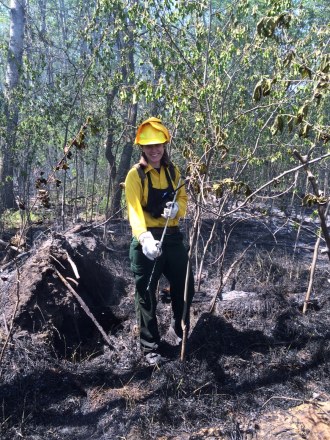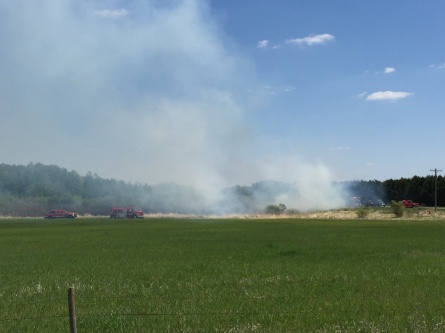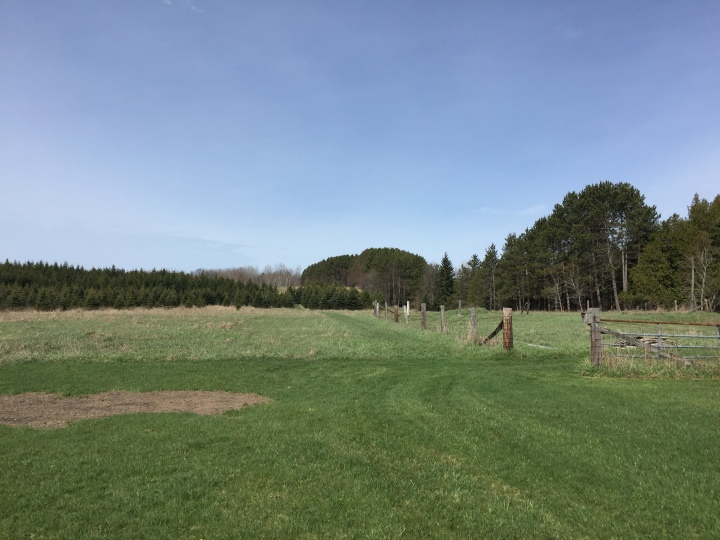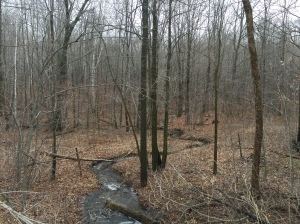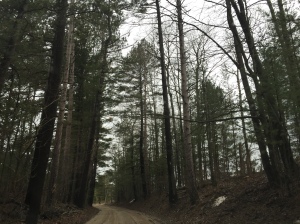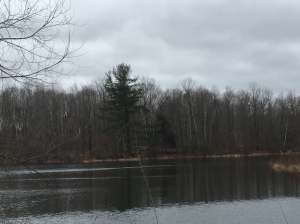“Don’t look back, you’re not going that way”
A dear friend gifted me a frame with this quote on it as I was leaving Michigan and beginning my 753 mile journey back to Minnesota. While I did not look back, I will never forget the memories and accomplishments I had while being in Michigan and the friends I made along the way. From the exciting adventures with my landowners (you know who you are!), all the crazy phone calls and the many laughs among colleagues and friends Michigan will be in my heart.
While letting landowners, colleagues, and friends know that I would be leaving they question did arise if I would continue to blog. Well my friends, the definite answer now is YES! This post is just a basic update and then we will get back to the “good stuff”… TREES!
It has been over two months now at my new position and so far so good- a bit crazy at first. I arrived and by the end of my first week I was out on a fire! A WILDLAND FIRE!!! Fire season should have been over by the time I started mid-May but things were so dry with the lack of rain it extended on and on and on! That first weekend I was here, I was given fire gear, a radio, and reminded that I was on call to have phone near me. Saturday afternoon, I see my co-workers name come up on my phone and my heart starts racing, it was time to face my first wildland fire. Racing down the highway, looked at my co-worker in the truck next to me and said “Fun Fact: Fire is one of my biggest fears, but let’s do this”! Shaking in my boots as we pull up, I see the smoke, the fire creeping along the field, firefighters on the ground and a helicopter in the air I thought to myself what did I get myself into? I used to just hug trees and now I am going to fight fire, WHAT?! We went to asses the situation, where it started, how it started and rate of spread. Once we had that information, I was handed a bladder bag (backpack with a spray nozzle full of water) and proceeded to march through a cattail slough. Hip deep in muddy water surrounded by cattails and other tall grasses I struggled to get myself to higher ground!
When I got back to my place that evening, my body and clothes were black from the ash, my legs tired from the weight of the pack and hiking, and was blowing black snot (yes gross but so true) and I thought to myself, why? Why am I fighting fire? After much thought, I compiled my best answer for this, Mother nature- trees. I do it to protect our natural resources. Fire is a good tool for management- but that is when it controlled and not threatening anything (people, structures, critical habitats). Fire can help fight invasive species, promotes regeneration of native plants and shrubs.
Anyways, all ended well- I managed to make it through first fire and was sent to the fire academy the following week and am officially certified to fight fire.
More updates to come…and good information of course!!
“Always look forward- Condensed advice from trees –> Be Strong, Be Solid
